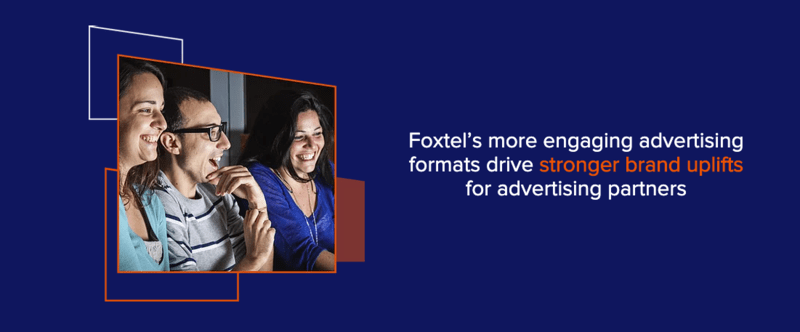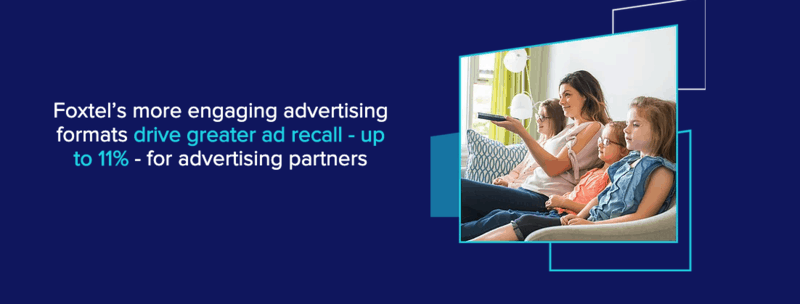A new research study by strategic insights consultancy Nature, commissioned by Foxtel Media, has revealed the impact of engagement on advertising effectiveness. The study involved qualitative and quantitative research and implicit behavioural measurement of over 3,000 Australians.
The research establishes, for the first time, a comprehensive definition of viewing engagement – as an outcome of emotional investment, intent, mental focus and social connection. It found that audiences watching Foxtel are 27% more engaged than those watching non-subscription television.

Partner & managing director of Nature’s Sydney office James Jayesuria said in a statement: “Our robust research process, which included in-depth interviews, ethnographic exploration, quantitative surveys, facial coding analysis and electrodermal activity tracking – categorically demonstrates that more engaged viewing offers better advertising outcomes.
“We believe this research offers a new definition of engagement for media and television and provided concrete evidence that will help shape the understanding in the effectiveness of television advertising.”

Key findings of the research include:
• On self-reported measures across all viewing occasions, Foxtel audiences are on average 27% more actively engaged than non-subscription TV audiences
• Through implicit measurement of natural viewing, the peak engagement for Foxtel viewing was 16% higher than non-subscription TV audiences
• More engaging advertising formats drive greater ad recall (up to 11%) for advertising partners
• More engaging advertising formats drive stronger brand uplifts for advertisers
The research investigated the effectiveness of advertising based on engagement and ad loads across Foxtel and non-subscription TV. The lower ad loads on Foxtel linear television translated to more positively engaged audiences. This in turn led to higher levels of advertising recall and better communications of brand messaging.
For example, in-depth research on viewer recall and messaging cut-through based on an advertisement for a household-name technology brand showed an 8% advantage on recall on the more engaging medium of Foxtel. Brand messaging recall uplift on Foxtel’s ad structure format, which broadcasts 33% fewer minutes of advertising per hour, was double that of non-subscription TV formats.
Foxtel Media CEO Mark Frain commented: “It should not be surprising that fewer ads and a more highly engaged audience leads to better advertising outcomes. But in today’s highly dynamic and fast evolving media environment, it is easy to lose sight of the power of higher quality content in delivering advertisers a more valuable proposition.”
“With marketing budgets under increasing constraint as brands try to navigate a post-pandemic recovery, every advertising dollar has to do its job. This research reminds us that not all reach is created equally, and that as an industry we need to better communicate and articulate the importance of viewer engagement in enhancing advertising effectiveness. A media buyer’s job does not just end when they’ve bought reach.”

TV market adspend recovery
Speaking to Mediaweek about the state of the TV ad market as a very tough year for the media draws to a close, Frain added:
“Following a downturn in early 2020 due to the Covid-19 pandemic TV advertising has begun to swiftly recover as we near the end of the year. SMI recently revealed television ad spend figures for October and it is the highest that we have seen in the last four years. In fact, TV advertising is already up 1.3% when compared to October 2019.
“There is no question that the explosion in live and on-demand BVOD consumption as a result of various state lockdowns has raised the profile of premium, video viewership. This is certainly the case for Foxtel Group platforms. Our consumption is up, and this is just not on smartphones, this is up everywhere, including on big screens. There is also a flight back to proven media, like TV, to build impact fast, as many brands and businesses go for broke in the lead up to Christmas.
“Greater consumption, engagement and attention from viewers are delivering great commercial outcomes for marketers, and we’re seeing that they are hungry for more data about this hyper-engaged audience. Every network has made strides in the area of data development giving agencies and marketers insight into these flourishing consumption patterns we’re seeing.
“Attention and engagement are becoming hot topics to measure performance, both of which TV delivers above other video platforms. In fact, with the new research we’ve just commissioned [see above], we’re bound to see a revolution in the way marketers tailor their advertising and explore new formats.”
